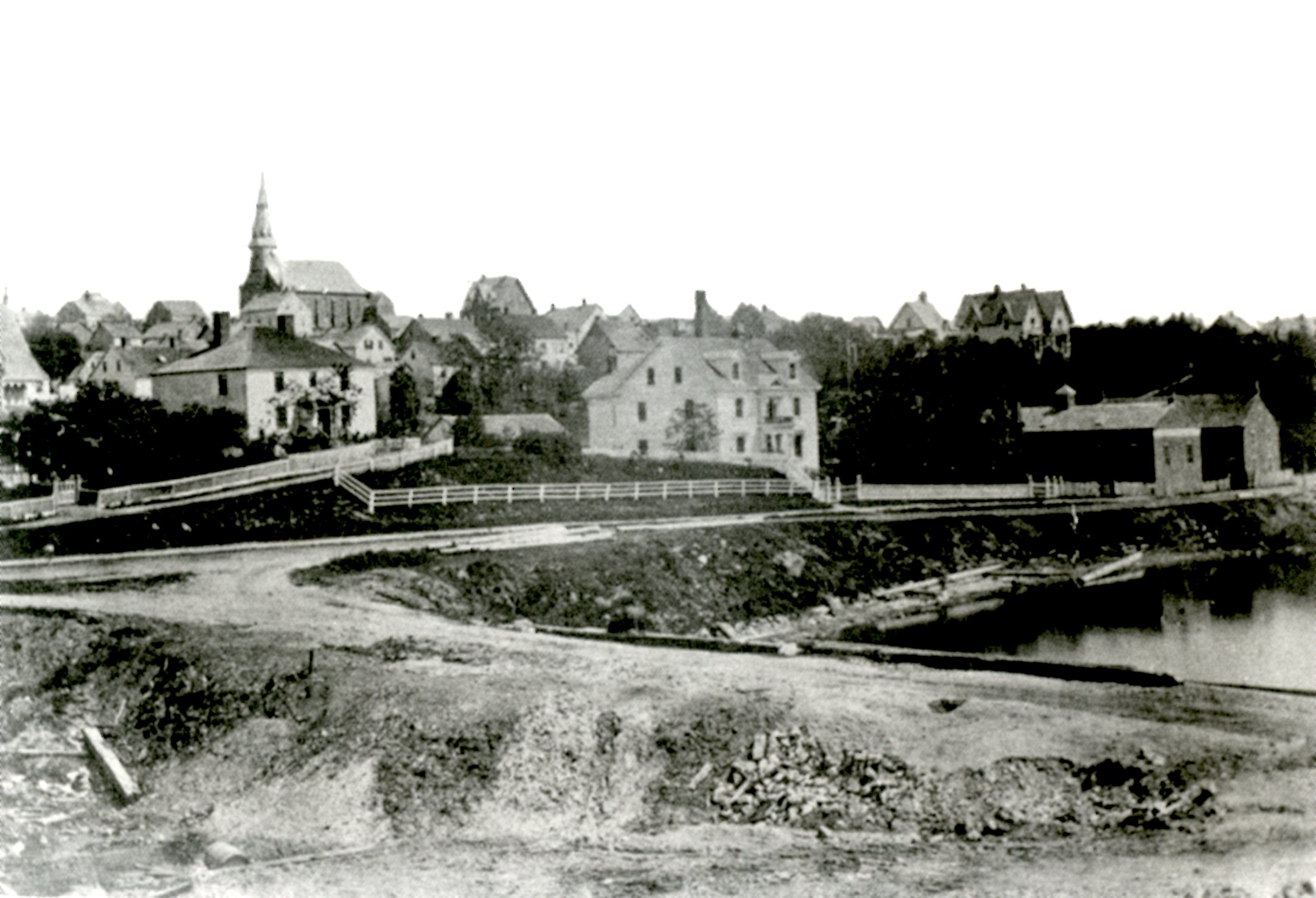
<!-- [if gte mso 9]><xml>
<!-- [if gte mso 9]><xml>
William H. Davies, Esq.
William H. Davies was born in Tipton, England, near Birmingham. In 1830, he moved to Nova Scotia to take over the Albion Iron Foundry (part of the Albion Mines, located in what is now Stellarton), appointed by Richard Smith, the manager of the General Mining Association. Davies was known as an excellent engineer, moulder, and mechanic. It is also believed that he had worked with the manufacturing of steam engines while living in England. The Albion Mines’ Foundry had its own blacksmith shop, machine shop, and woodworking shop. He did not only lease the foundry, but was also put in charge of the iron works in Albion Mines. During his time here, he built steam engines (one was later used in the Pictou Foundry) and assembled locomotives. In George Patterson’s History of the County of Pictou, Patterson called Davies the “father of the iron foundry business in Nova Scotia” after his extensive work at Albion Mines’ Foundry, and later the opening of the Pictou Foundry.
In 1855, the Pictou Foundry was constructed by Davies. He had, by then, moved to Pictou in the home beside the Foundry (which was built in 1855). The Foundry includes a machine shop and foundry, pattern shop, boiler and blacksmith shop, warehouses, and also dealt with producing castings, engines, boilers, and special machinery. It also provided some ship repair services. The business employed about 20 people and provided business for both the country and Northern Nova Scotia. The buildings were laid out so that they created a square, and are likely to be the earliest surviving iron foundry buildings in the province. The location was central to the waterfront and railway. After his death in 1876, the foundry was passed onto Davies’ sons, Charles and George. They managed the business until it was sold to Joseph Robb and Douglas Hannan.
The house in Pictou was built circa 1855. The design includes elements of Greek revival and Federal style. Listed as 68 Front Street on the house record from 1985, the home had ten owners up until this time. Davies himself owned it from 1855 until his death, and by 1879 his sons had taken over the home. Other owners include George R. Davies, George H. Elliot (Barrister), Edmund Q. MacPhail (postmaster), James W. Gunning (railway engineer), May O. Gunning, Hazel MacKinnon, George H. MacKinnon (electrician), and G. Bennett MacKinnon (retired military).
| Contributor: |
|
| Tags: | Pictou, W.H. Davies, Davies House, Front Street, shipyards, Albion Mines, Iron, Ferguson Industries |
| Views: | 1544 |
| Uploaded on: | August 25, 2015 |